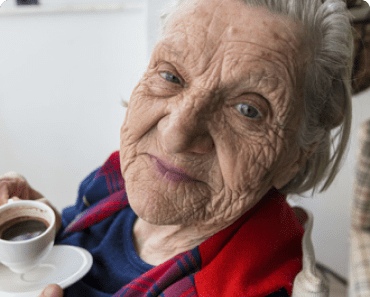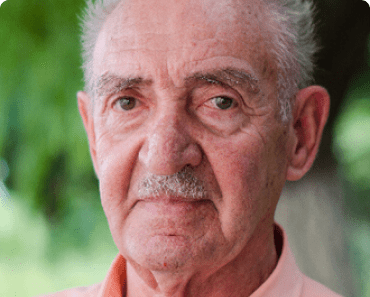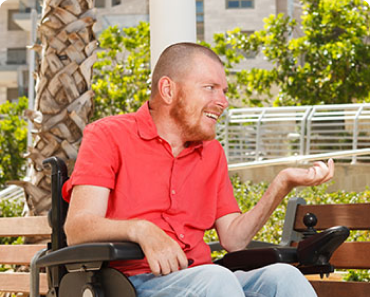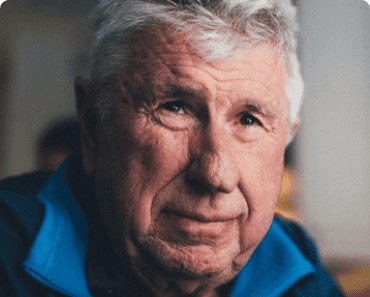Residential care advocacy

Albert’s Story
Albert, who lives in an aged care home recently had a fall whilst walking through the homes garden. Following his fall, the staff told Albert that he was a falls risk and would now require assistance with showering. Albert contacted ADA Australia k because he felt that this was a breach of his privacy.
The advocate supported Albert to discuss his concerns with the manager of the aged care home. At this meeting it was agreed that Albert would sign a waiver accepting personal responsibility for any injury that may occur as a result of his decision to shower unassisted. Albert was happy with this outcome and continues to shower independently.

Masae’s Story
Masae entered an aged care home after having an accident in her home which meant she was unable to care for herself anymore.
Masae is Japanese and was used to cooking traditional cuisine for herself. Since entering the home she was unable to adjust to the food options available to her. She took such a dislike to the food provided,
The Advocate explained to Masae and her family that the Quality of Care Principles 2014 state that meals and refreshments must meet “special dietary requirements, having regard to either medical need or religious or cultural observance”.
Once this was explained to Masae, Masae agreed to meet with the Advocate and the home manager to discuss this issue and ways to address it. The home manager suggested developing a meal plan for Masae incorporating recipes which Masae has used in the past using easily accessible ingredients. Masae agreed to trial the meal plan.
The Advocate returned within 2 weeks to determine the progress of her new meal plan and found that Masae was once again enjoying meal time.

Glenys’s Story
Glenys is a lesbian woman who had trouble finding alternative accommodation due to heterosexist harassment from other residents in her aged care home. Glenys had only spoken to four other residents about her sexual identity during the five years she had lived at the facility. After an argument regarding dining room arrangements,
While in this case it was good to have achieved a positive outcome that Glenys wanted, it is recognised that there is still significant work to be done for LGBTI clients, particularly in terms of raising awareness in the aged care sector so people feel welcome everywhere.
Home care advocacy

Tony’s Story
Tony is the carer and Enduring Power of Attorney for his wife Rosa who has dementia. Rosa receives a number of in-home supports including assistance with showering. Tony contacted ADA Australiabecause Rosa’s home care service was sending a different support worker to shower Rosa each day and Tony noticed that Rosa

Carmen’s Story
Carmen receives a cleaning service through the Commonwealth Home Support Program once a fortnight. Carmen contacted ADA Australia because her support worker had been cutting her regular service short by up to 20 minutes a shift and was not completing all the required cleaning tasks. Carmen was particularly concerned
The Manager also expressed concerned about the risks associated with Carmen’s floors being left wet. The Manager informed Carmen that as a results of her complaint, all staff would receive further training on ensuring client safety and would also be instructed to adhere to the allocated timeframes of a shift. In addition to this, the advocate assisted Carmen to priorities takes to be completed with each cleaning shift and ensured that this was clearly documented in Carmen’s care plan. Since the involvement of ADA Australia, Carmen has noticed a significant improvement in the quality of the cleaning service.

Glenys’s Story
Elizabeth lives alone in a high set house and has no family nearby. She has two friends who live in the same suburb. Elizabeth recently had a heart attack and as a consequence was fitted with a pacemaker. When in the hospital Elizabeth spoke to hospital staff regarding her concerns of how she would cope when she returned
Elizabeth said that had spoken to hospital staff several times and they told her they would get back to her, but no one did. When she arrived home, Elizabeth contacted ADA Australia to ask for some support in accessing home care. An advocate assisted Elizabeth to connect with My Aged Care about her care needs. This resulted in Elizabeth receiving Commonwealth Home Support Services (CHSP).
Disability advocacy

Anne’s story
Anne visits her local services club every weekend for a meal and a catch up with her friend Amy. Both Anne and Amy enjoy getting out on the dancefloor in their power wheelchairs for a dance. Anne contacted a Disability Advocate after she was advised by club management that she was no longer allowed on the dancefloor in her power
The advocate listened to Anne’s concerns and supported her to raise her concerns in a meeting with the club manager. At the meeting the club manager explained that wheelchairs had been banned from the dancefloor due to health and safety concerns. The advocate noted that the club was actively preventing people with disabilities from participating in dancing, which was a form of discrimination. The club manager did not agree. The Advocate later supported Anne to make contact with the Human Rights Commission and following the Commission’s involvement the service club removed their policy banning wheelchairs on the dancefloor.

Daniel’s story
Daniel had a stroke at age 37. The stroke affected Daniel’s communication. Daniel mostly understands others but can find it difficult to communicate back and express his views and wishes. Daniel notes he often struggles to find the words he wants to say even though they are right on the tip of his tongue.
Daniel made contact with a Disability Advocate because during health consultations his doctor would always direct health related questions to Daniel’s support worker rather than himself. Daniel felt frustrated by this because with a little more time Daniel could answer the question more accurately himself.
The advocate met with Daniel and took the time to understand Daniels concerns. Together Daniel and the advocate explored options for addressing his concerns. At Daniel’s direction, the advocate talked to Daniel’s support workers about how they could encourage the doctor to direct questions back Daniel. The Advocate also supported Daniel to write a letter to his Doctor expressing his concerns and provide some tips on how to communicate with Daniel. The advocate also gave Daniel information on where he could find more communication support. Daniel gave this letter to his doctor at his next health consultation and his doctor apologised for not including Daniel in discussions about his health. The doctor then used some of the communication strategies to actively engage Daniel in a discussion about his health.

Glenys’s story
Rachael lives in supported accommodation with two other women. A range of support workers come into the house throughout the week to provide assistance with tasks such as cooking, cleaning and shopping.
Rachael contacted a Disability Advocate after one of the support workers yelled at her for getting in the way and pushed her,
The Advocate listened to Rachael, explained that she had the right to live free from abuse and presented Rachael with some options for addressing her concern. Rachael decided she no longer wanted the support worker in her home and asked the Advocate to discuss this with her disability service provider. The disability service provider was shocked to hear how Rachael had been treated and apologised to her. An investigation was carried out resulting in the swift/immediate removal of the support worker in question from Rachael’s home.
Elder rights and abuse advocacy

Ruben’s story
Newsletter signup
Sign up to receive a copy of The Advocate. Six editions a year with latest in aged care and disability advocacy news. .
"*" indicates required fields